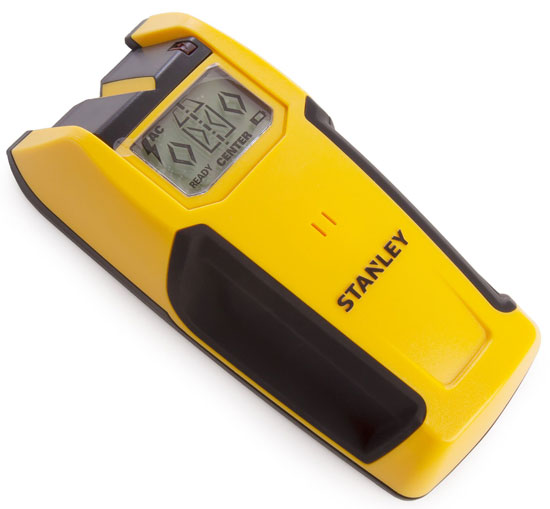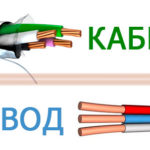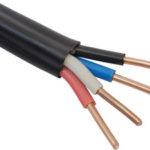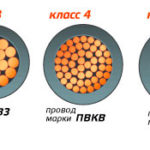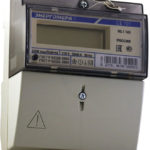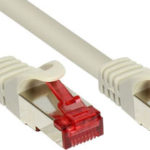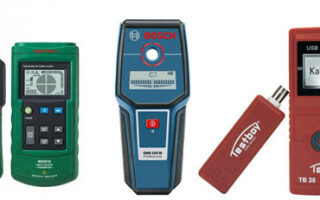Hidden wiring detector or detector electrostatic, as well as electromagnetic device is used:
- When changing the scheme of the electrical network of the room;
- When laying additional power and low-voltage cables in the wall;
- When drilling into the wall for dowels and nails.
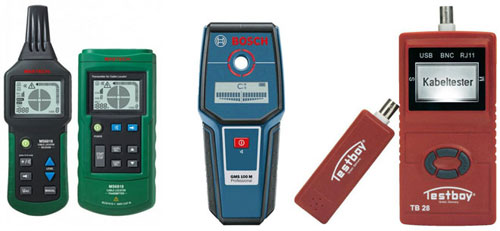
Hidden wiring detectors are used in major renovations of apartments that require complete replacement of electrical wiring.
Sometimes the wiring is done without a technical plan, according to the principle of the shortest distance between the voltage points, so electrical wires in the old walls are sometimes located at any angle. To avoid drilling into the wall at random and to protect yourself from electric shock, a preliminary search for hidden wires is carried out.
The device finds wiring in drywall and concrete walls, as well as wooden interior structures. The hidden wiring detector that scans wiring is used to find screws, screws, pipes, metal fittings or slabs recessed in the wall. To detect copper and aluminum wires, corrugated tubing will not be a screen.
How the device works
The devices differ from each other in functionality. Wiring detection methods depend on the type of devices used.
Common types of electronic indicators.
- universal, combined;
- metal detectors;
- electrostatic;
- electromagnetic.
Electrostatic hidden wiring detectors detect wires that are energized, the sensitivity of the device picks up the electric field.
Electromagnetic hidden wiring detectors detect the magnetic component of hidden metal products. If the wall to be inspected is wet or has a metal surface, electrostatics and magnetism will interfere with the search for wires.
Metal detectors find metal wire strands, fittings and steel pipes under plaster. The operation is based on the interaction of eddy currents occurring in a metal object under the influence of the magnetic field of the inductive coil of the device.
Universal models use several principles to find wires. If you need accuracy in finding the wire in any, even raw, wall, the versatility of the hidden wiring detector is indispensable.
The functions of the devices are not limited to finding hidden cables with an approximate radius of action, modern models have a wide range of functionality.
The detection scheme of detector devices and the depth of detection are different, this should be taken into account when selecting and purchasing a device.
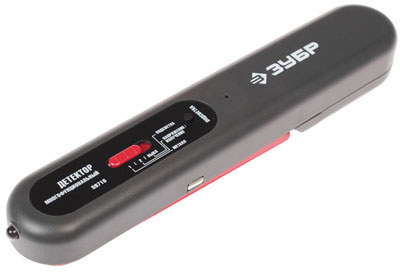
In some devices about a successful search reports not only a beep, but also a light pulse. The display shows information about what the sensors find in the wall.
The hidden wiring detector can be equipped with a laser level or a digital tape measure.
Disadvantages include the inability of non-universal indicators to detect de-energized wiring.
Rating of the best hidden wiring detectors
The range of models of hidden wiring detectors is wide. The answer to the question of which detector to choose from the available on the market, depends on the purpose of the device.
ADA Wall Scanner 120 PROF A00485.
Household model is powered by a battery type crown. The body is made of durable plastic. Protective pads protect it from impacts. Detects ferrous and non-ferrous metals, wooden structures in walls, on ceilings and floors. Reveals between 4 and 12 cm in depth.
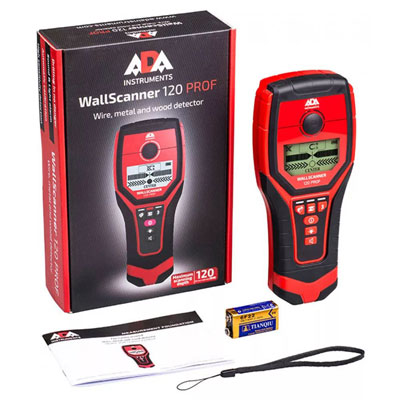
ADA Wall Scanner 50 A00506
Low cost metal and wiring scanner. Narrow, with folding sensor. There is an adjustment of sensitivity. Alarm - sound and light indicators. Domestic model, detects metals, wires, electrical voltage, the profile under the plasterboard. Depth to target - 5 cm.

Bosch GMS 120 PROF
hidden wiring detector, select a place on the wall for safe drilling. For this purpose, a marking hole is provided in the center of the housing. When hidden wiring is detected, a red LED lamp lights up. Able to find steel, copper, aluminum and heterogeneous elements in the examined walls. Operates in several modes, which depend on the examined surface. Depth of impact on the target - from 3.8 to 12 cm.
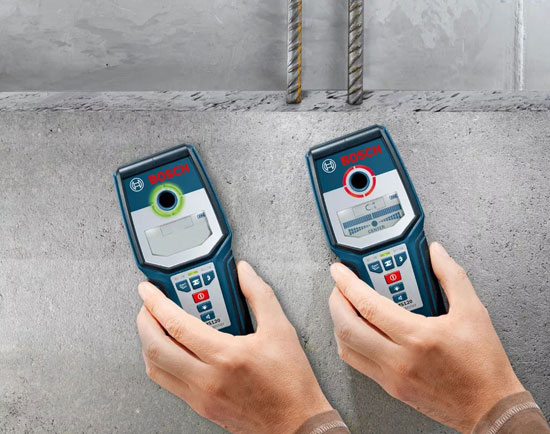
E121 DYATEL
Works on the electrostatic principle, lightweight, compact and functional, traces hidden wiring or breakage, identifies phase and neutral wires in live parts of electrical networks, reveals grounding or grounding. To scan wires, the network must be under operating voltage. Object detection is up to 12 cm.
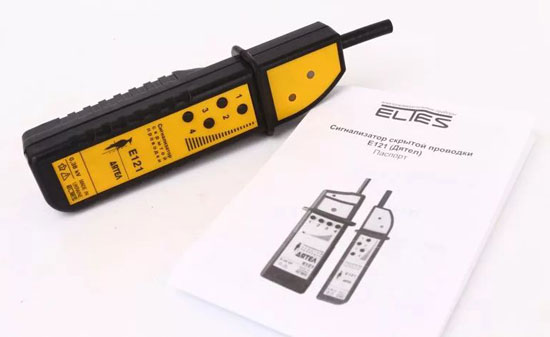
BLACK & DECKER BDS 200
Universal metal detector with a shallow depth of wire detection. Used as a precautionary measure before drilling. Equipped with an impact-resistant coating and sensitivity control. There is a notification of the result of scanning audio-visual response with duplication of information on the display.
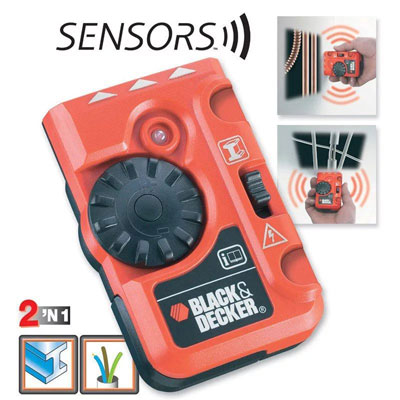
DSL8220S
Portable hidden wire detector to detect wires in the wall. The type of indication is a red LED light and sound signal. In terms of capabilities similar to the detector E121 DYATEL. It is used for indication of hidden objects made of plastic and wooden structures. Detects the phase wire. The body has a splash-proof version. The search depth of the target object is 20 cm.
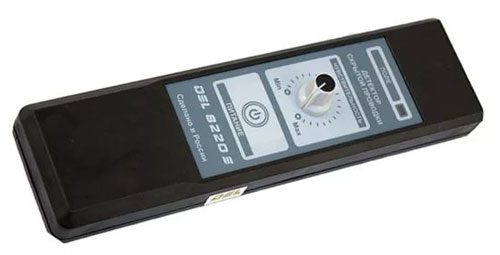
MEET MS-158 M
With the help of this sensor the integrity of veins of cables and wires is checked, it allows to detect alternating voltage and dangerous electromagnetic and microwave radiation. Detects the exact location of the voltage wires, the error is 5 cm. Detection depth is 50 mm.
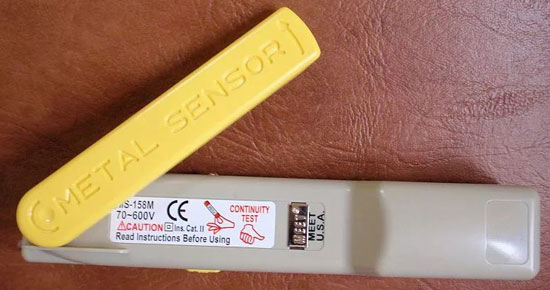
Ryobi PHONEWORKS RPW-5500
Household wall scanner. On his body has a special marker that marks the location of the object detection. Part of Ryobi's line of smartphone gadgets. Works only with drywall. The scanning depth is 19 mm.
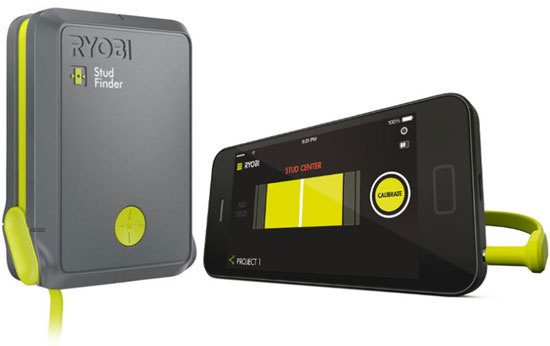
Stanley 0-77-406 S200 STHT0-77406
Detector of heterogeneous materials - finds electrical wiring, rebar in concrete, wooden beams, frames. Detects the center of the detected object in one pass. The depth of search depends on the nature of the object: to scan metal or wooden parts - 2 cm, to find wires - up to 50 mm.
